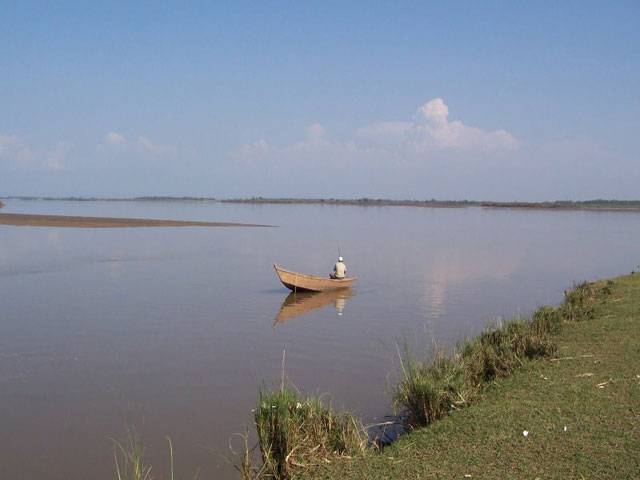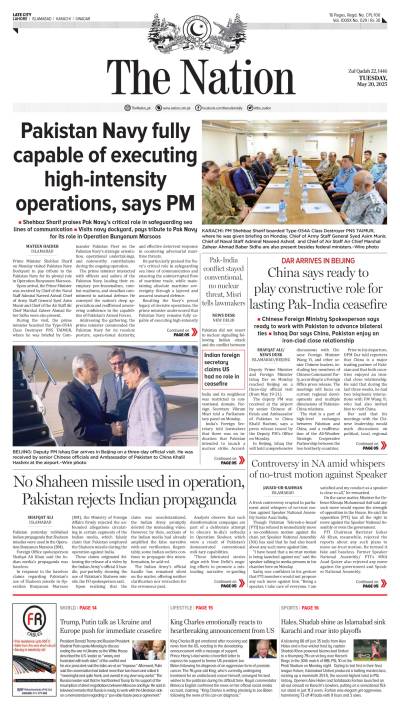ISLAMABAD - India has expressed its willingness to change the design of Ratle Dam (850mw Hydropower Generation Project) being built on Chenab River in Indian held Kashmir.
Following the reservations and serious concerns raised by Pakistani authorities during talks with Indian authorities so far held on water related bilateral issues, the later has now expressed its readiness and willingness to change the design of the dam. Moreover, India has also conveyed her willingness to reduce the height of spillways being built for two dams on the site and as a result to change in the design capacity of water storage would decrease in the dams, official sources at Water and Power Ministry told on Monday.
The sources also said that the Indus Water Commissioner has raised objections on Ratle Dam project with India and two rounds of talks between concerned authorities of both countries have been held so far to resolve the differences. They also told that soon an Indian delegation would visit Indus Water Commissioner Lahore and review over the design of Indian water and power project would be made.
India had awarded this project to a private company for 35 years. Under the deal, the private firm would construct and operate the project and after the passage of 35 years, it would hand over the project to the Indian government.
"Water flow at Head Mirallah will reduce by 40 per cent due to construction of Ratle Dam project. Fertile agri land of Pakisrani Punjab would got affected with this Indian project," said the sources.
The foundation stone for the Ratle Dam at village Drabshala, in Kishtwar Sub-division in Indian held Kashmir, was laid by the Indian Prime Minister Dr. Manmohan Singh and Chairperson - Sonia Gandhi in June 2013.
This is the first IPP hydropower project in the Indian held Kashmir awarded on tariff based International Competitive Bidding (ICB) to be implemented on BOOT basis for a period of 35 years.
The Chenab River is a major river of Indus River System, originating from the Lahaul and Spiti district of Himachal Pradesh, India, and flows through the Jammu & Kashmir into the plains of the Punjab, Pakistan. The Chenab waters are allocated to Pakistan under the terms of the Indus Waters Treaty.
The area around the project is located in inner part of Himalayas and represents rugged topography with very high relief. The area is drained by number of streams and tributaries of River Chenab. The River has deep and narrow gorges on both sides of proposed weir sites. The entire course of river is through high cliffs rising two to five thousand feet above the river bed on either side and through very rugged and mountainous region except for a very small length of about 32 km between Reasi and Aknoor which afterwards is joined by the Tawi beyond which the river enters the Sialkot district of Pakistan.
It is significant to mention here that total area drained by the river up to Pakistan is 22,662 square Kilometer out of which 4662 sq km miles are under glaciers. The project area lies in zone-IV of the seismic zoning map of India.
The Ratle project site lies between the Dulhasti HEP (390 MW) on its upstream, which became operational in 2007 and has been generating 1907 GWh (million units of electricity) and the Baglihar HEP (450 + 450 MW) on its downstream. The project site is located about 25 km from Kishtwar town. The installed capacity of the project is 850 MW based on hydrology and power potential studies by Power Development Department of GoJ&K.
Wednesday, May 21, 2025
India ready to alter dam design being built on Chenab

Caption: India ready to alter dam design being built on Chenab
5:43 PM | May 20, 2025
-
Lahore emerges among safest global cities in Numbeo 2025 index
-
Lahore emerges among safest global cities in Numbeo 2025 index
-
India’s suspension of Indus Water Treaty legally baseless
-
Seventh polio case reported in Pakistan amid nationwide vaccination drive
-
Pakistan reports sixth polio case of 2025
-
PTA begins issuing VPN licences to regulate usage
The Wider War
May 20, 2025
Margalla on Fire
May 20, 2025
Defeated and Depressed
May 20, 2025
Regional Reset
May 19, 2025
Peak Potential
May 19, 2025
Golf or Water
May 21, 2025
Performing CPR
May 21, 2025
Lack of Sign Language Teaching
May 21, 2025
State of War & Public Awareness
May 21, 2025
Indian Attack
May 21, 2025
ePaper - Nawaiwaqt
Nawaiwaqt Group | Copyright © 2025





